Choosing a paper bowl seems simple, but the wrong size wastes money and disappoints customers. This small detail can slowly eat away at your profits and brand reputation.
Choose the right bowl size by first matching it to your food type. Next, use the size to control portions, manage costs, and create a strong brand impression.
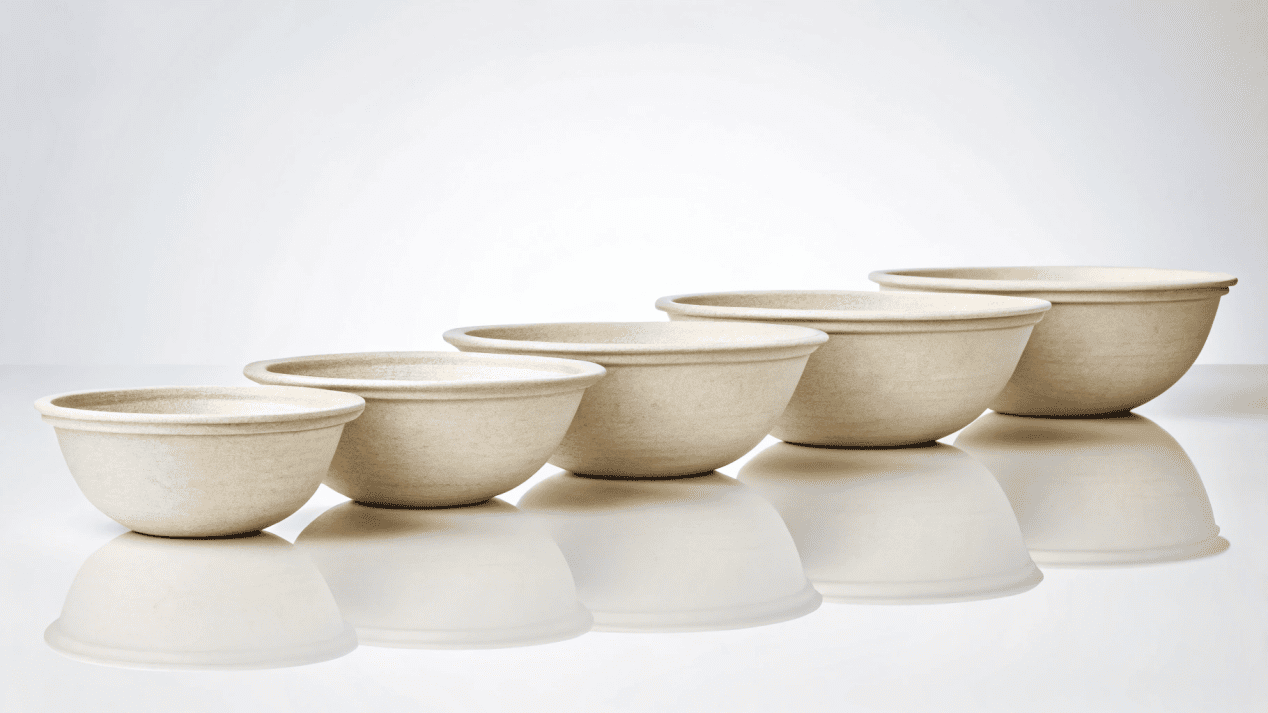
As an engineer and a manufacturer, I deal with precise measurements every day. A few millimeters can make a huge difference in how a custom lid fits. It's the same with bowl sizes. I've had clients who saved thousands of dollars a year simply by switching from a 24 oz bowl to a 16 oz bowl for a specific menu item. They didn't change the amount of food, but they changed their costs and how their customers saw the meal. This is a small decision with a big impact.
Shouldn't Your Bowl's Size Match What You Serve?
You serve great food, but something looks off. Serving a side salad in a huge bowl looks cheap, and a hearty stew in a small bowl feels stingy.
Yes, the bowl's function must come first. Small bowls are for sides and desserts, medium sizes are for standard meals like soup, and large bowls are for generous main courses.
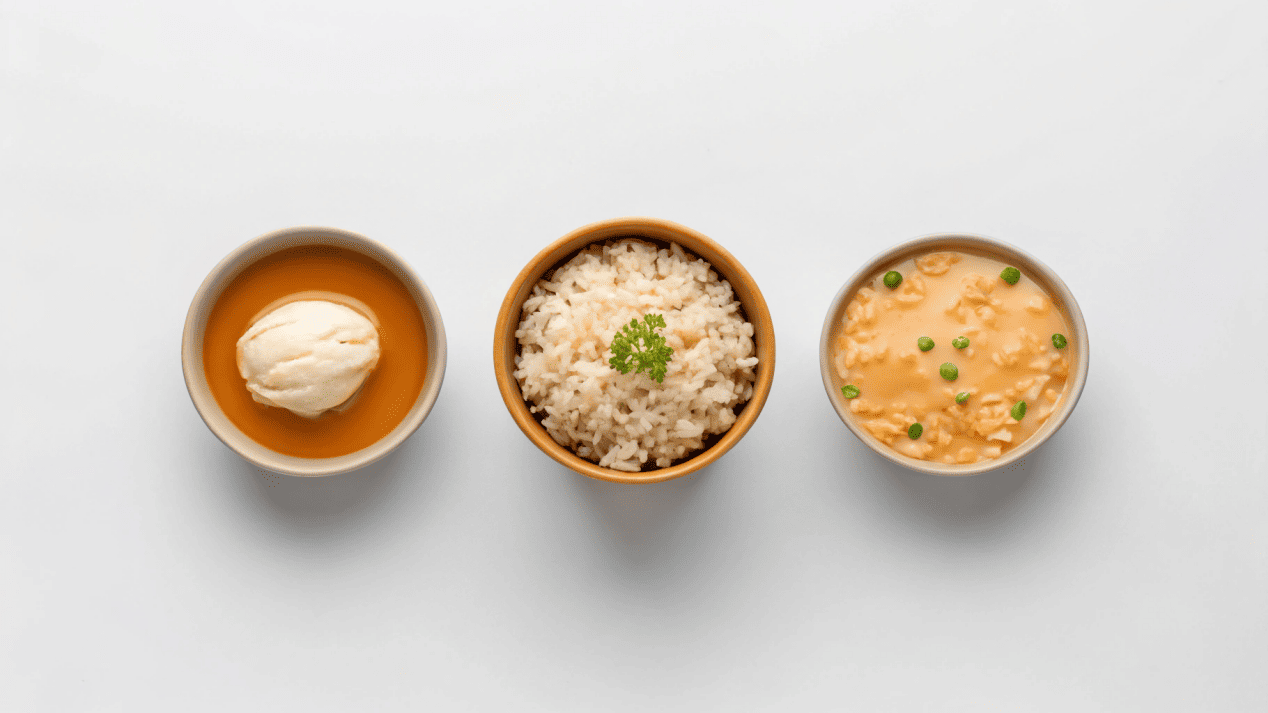
The first question I always ask a client is, "What are you putting inside it?" The answer determines everything that follows. You have to match the bowl to the mission. Using the wrong size is like wearing shoes that don't fit; it just doesn't work. Let's break down the common sizes we manufacture and what they are best for.
Finding the Right Fit for Your Food
The key is to think about the customer's experience. You want the bowl to look full and satisfying.
- Small Bowls (8-12 oz / ~240-350 ml): These are your specialists. They are perfect for controlled, single-serving items that go with a main dish. Think of ice cream, fruit salads, dips, or small portions of soup for a lunch combo. We often sell these to customers who want to offer add-ons or kids' meals.
- Medium Bowls (16-24 oz / ~470-700 ml): This range is the versatile workhorse for most restaurants. It's the ideal size for a satisfying lunch, like a hearty soup, a standard salad, or a single-serving chili or noodle dish. Most of my clients find their main menu items fit perfectly here.
- Large Bowls (32 oz+ / ~950 ml+): These bowls make a statement. They are for your biggest, most impressive dishes. Think of large build-your-own grain bowls, main-course salads, or family-style pasta for takeout. This size communicates abundance and great value.
Remember to consider food density. A 16 oz bowl is perfect for dense chili, but a light, leafy salad needs a bigger 24 oz or 32 oz bowl to hold what looks like a fair portion.
How Does Bowl Size Affect Portion Control and a Customer's View?
You are trying to control food costs, but your profits keep shrinking. Your staff might be over-serving to make a half-empty large bowl look full, wasting ingredients and money.
The right bowl size is your best tool for portion control. It ensures every customer gets the same amount, making portions look generous and preventing expensive food waste.
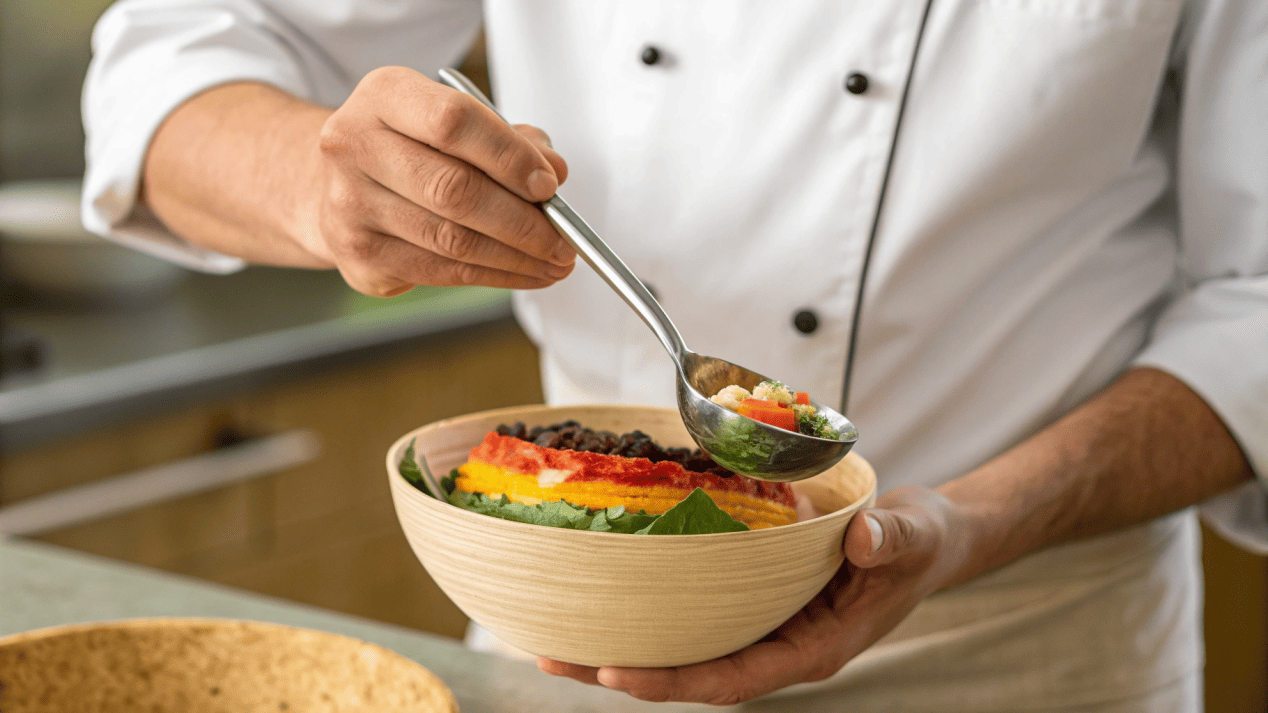
The size of the bowl is about psychology as much as it is about function. It directly controls how your customers see value and how you protect your profit margins. From a business operations standpoint, this is where you can gain a lot of control.
The Science of Serving
A simple change in packaging can solve major operational headaches. The goal is consistency. When you use a standardized bowl size for each menu item, you ensure that every customer gets the same experience, every single time. A 16 oz bowl is filled with a 16 oz portion. This is critical for managing your food cost calculations. You know exactly how many portions you can get from a large batch of soup.
It also frames the food perfectly. A bowl that is filled nearly to the top looks much more appealing and generous than a larger bowl that is only two-thirds full. The customer feels like they are getting their money's worth. This prevents your staff from adding "just a little more" to make a big bowl look better, which is an instinct that costs businesses a fortune over time. One of my clients switched to smaller bowls for their side dishes and found their food costs dropped by almost 5% in the first month.
Is a Bigger Bowl Really Costing You More Money?
You think the extra cost for a bigger bowl is just a few cents. But you are not seeing the hidden costs in storage, shipping, and wasted food that add up.
Yes, a bigger bowl costs more in many ways. It has a higher unit price and leads to higher food costs from over-portioning, and increased storage and shipping fees.
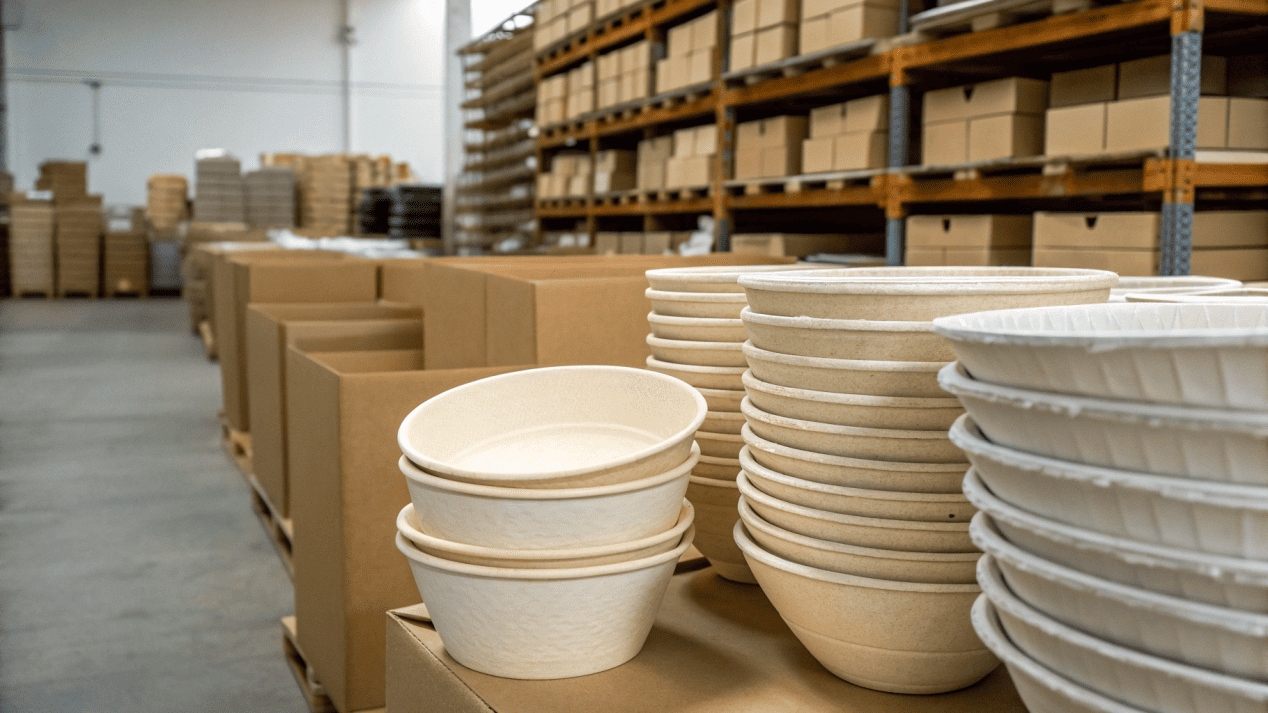
When you get a price quote from us or any manufacturer, you will see that a larger bowl has a higher per-unit cost. That's obvious because it uses more raw paperboard. But that is only the beginning of the story. The total cost of choosing the wrong size is much higher.
Direct vs. Indirect Costs
When I consult with clients, I ask them to think about the total cost, not just the unit price.
- Direct Costs: This is the price per bowl. A 32 oz bowl will always cost more to produce than a 16 oz bowl. If you use 1,000 bowls a day, even a two-cent difference adds up to over $7,000 a year.
- Indirect Costs: This is where the real expenses are hiding.
- Food Costs: As we discussed, larger bowls encourage over-portioning. A bigger bowl can easily lead to giving away an extra ounce of food per serving, which directly eats into your margins.
- Storage Costs: Bigger bowls come in bigger boxes. They take up more space on your shelves. In a small kitchen or stockroom, space is valuable.
- Shipping Costs: The boxes are not only bigger but also heavier. This increases the cost of shipping the packaging from my factory to your business.
The goal is to find the sweet spot: the smallest size that holds your portion perfectly and presents it well.
Can Your Paper Bowl Actually Build Your Brand?
You see your packaging as just a necessary expense. But with takeout and delivery, a generic, poorly chosen bowl makes your brand completely forgettable after the food is gone.
Absolutely. Your bowl is a mini-billboard. Its size communicates your brand's identity—value or gourmet—and the surface provides the perfect canvas for your logo and message.
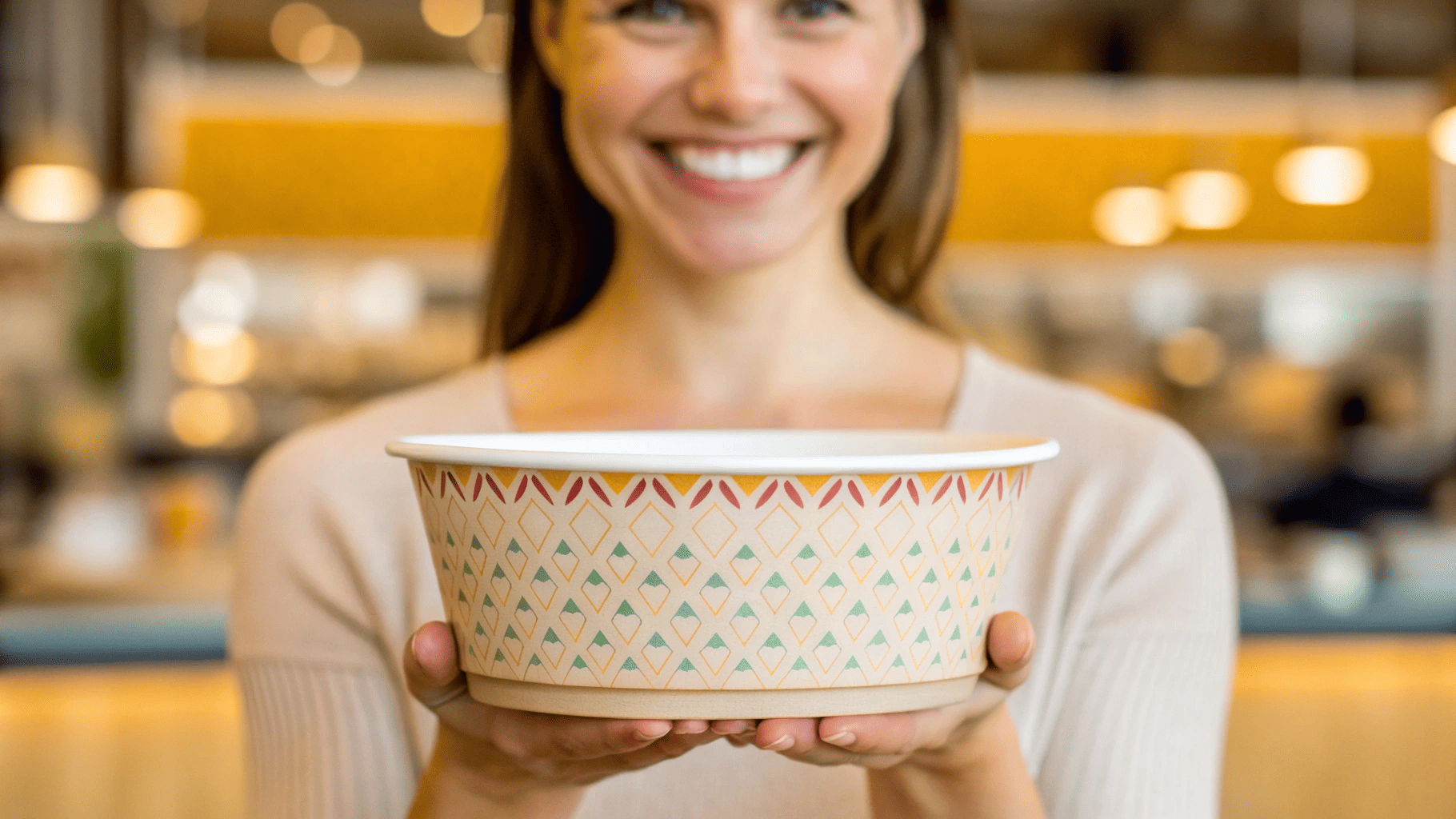
Your packaging is one of the most important parts of your brand, especially if a customer's first experience with your food is through a delivery app. The bowl is the first thing they see and touch. Its size and design are a huge part of their experience.
Your Bowl's Message
The size you choose sends a clear message. Are you known for huge, value-packed meals? Then using a large, impressive 32 oz bowl reinforces that brand promise. Are you a gourmet eatery serving high-end, carefully portioned food? A smaller, more elegant 12 oz bowl might be a better fit for your brand identity. The container should feel like it belongs to the food inside it.
A Canvas for Your Logo
The surface of the bowl is prime marketing real estate. The size you pick determines how much space you have for your custom branding. A larger bowl gives you more room for a bold logo, a vibrant design, or even a promotional message like your website or a QR code for a discount. When your customer takes that bowl back to their office, it sits on their desk. Your logo is seen by their colleagues. It is a physical advertisement that continues to work for you long after the meal is finished.
Conclusion
Choosing the right paper bowl is a strategic decision. It balances food presentation, cost control, portion consistency, and brand identity to help your business succeed.
